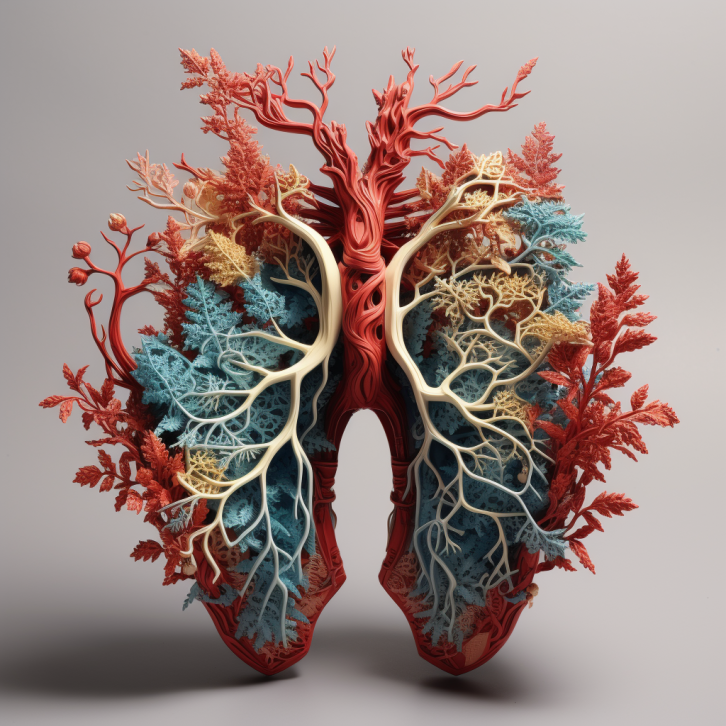Long COVID syndrome (LCS) is a complex, chronic condition that can arise after COVID-19 infection.
Key facts about LCS:
- Affects an estimated 10-30% of COVID survivors
- Causes debilitating symptoms lasting months to years after initial infection
- Impacts nearly every organ system, especially the brain
- Exact causes remain unclear but may involve vascular damage and inflammation
- Treatments are limited and focus on symptom management
Source: Inflammopharmacology 2023
As the COVID-19 pandemic stretched into its third year, a troubling phenomenon came to light: some patients never fully recovered.
Weeks or months after testing negative, they developed new symptoms like fatigue, “brain fog,” headache, and heart palpitations.
For many, these symptoms waxed and waned but never fully resolved, dramatically reducing their quality of life.
Researchers dubbed these long-lasting symptoms “long COVID.” Up to 30% of COVID survivors may develop long COVID, meaning millions could suffer chronic disabilities.
Understanding and treating long COVID is now a top priority.
Defining Long COVID Syndrome (Symptoms & Signs)
There is no single agreed-upon definition of long COVID yet. Initially called “post-acute COVID syndrome,” long COVID is broadly recognized as new or ongoing symptoms arising 4+ weeks after acute COVID-19 infection.
Long COVID is likely not one condition, but a spectrum encompassing different organ dysfunctions.
The most common manifestation is severe, persistent fatigue.
However, symptoms run the gamut, including:
- Shortness of breath, cough
- Headache, “brain fog,” problems concentrating
- Dizziness, chest/abdominal pain
- Joint/muscle pain, numbness/tingling
- Taste/smell changes, nausea, diarrhea
Symptoms tend to fluctuate in severity and new ones may appear over time.
Patients describe good days when they can function close to normal and bad days spent in bed.
Complete recovery often takes 1+ years, if it happens at all.
Due to this variability, experts caution long COVID must be a diagnosis of exclusion.
Since many conditions like chronic fatigue syndrome share similarities, other explanations for symptoms should be ruled out first.
Objective proof of prior COVID infection, such as a positive PCR test, is also recommended for confirming long COVID.
Prevalence and Risk Factors
In one of the largest studies to date, researchers in Israel analyzed electronic health records of nearly 2 million people, of whom almost 200,000 had confirmed COVID infections.
Within 6 months, 10% had symptoms consistent with long COVID.
Certain groups appear more vulnerable. Long COVID occurs more often in:
- Women
- Older individuals
- Those with more severe initial infections
- People with pre-existing conditions like diabetes, lung disease
However, young, healthy people are still at risk. Up to 5% of infected athletes develop long-lasting fatigue and breathing issues.
Prior vaccination provides some protection against long COVID but does not eliminate the risk entirely.
Long COVID’s true prevalence remains uncertain and estimates range widely from 3% to 30% of COVID survivors.
Applying these percentages, however, suggests millions could develop persistent disabilities.
Understanding risk factors can help identify and protect the most vulnerable.
Causes and Mechanisms of Long COVID

The causes of such a wide array of symptoms months after infection remain poorly understood.
Leading theories center on two main mechanisms:
Persistent Vascular Damage
- COVID-19 often damages blood vessels, causing inflammation and clotting issues. Vascular injury may continue after the virus clears.
- Tiny clots can block oxygen flow, causing mini strokes and organ damage. This may explain “brain fog.”
- Ongoing vascular problems likely contribute to many symptoms, especially fatigue and breathing issues.
Dysregulated Immune System
- Severe COVID-19 involves a “cytokine storm,” where inflammation rages out of control.
- For some patients, cytokine levels remain elevated after recovery, causing systemic issues.
- Lingering inflammation may trigger autoantibodies that further damage tissues like nerves.
Additionally, remnants of viral particles have been found persisting in organs like the intestines, adrenal glands, and brain, which could spark localized inflammation.
More research is urgently needed to clarify how COVID-19 triggers such lasting, body-wide effects.
Long COVID’s Impact on the Brain
Neurological issues are very common in long COVID.
Besides frequent headaches and cognitive dysfunction, some develop chronic anxiety, depression, and sleep disorders.
Brain imaging reveals visible impacts like microbleeds and reduced grey matter months after infection.
Autopsies show damage to key brain cell types and blood vessels.
The brain appears highly vulnerable for several reasons:
- The virus can cross the blood-brain barrier and directly infect neurons.
- Blood vessel injury reduces oxygen supply.
- Inflammation damages nerve fibers.
- Lingering immune activation impairs cognition and mood.
- Isolation, inability to work, and limited treatment options take a psychological toll.
Cognitive testing demonstrates long COVID patients have deficits in memory, attention, and processing speed akin to aging a decade or more overnight. Healing these deficits will be a key target for treatments.
Searching for Treatments for Long COVID
With so much unknown, proven treatments do not yet exist.
Current management focuses on relieving individual symptoms:
- Physical therapy helps rebuild strength, stamina, and breathing capacity.
- Headache, pain, and sleep medications provide relief.
- Low-dose antidepressants and stimulants may aid focus and energy.
- Cognitive behavioral therapy counters anxiety and depression.
Anti-inflammatories like colchicine have shown promise in small trials, as has the gout drug probenecid.
Future large studies will clarify if these are viable treatments.
Other drugs targeting clotting, the immune system, and antivirals may also help subsets of patients.
Recovery is often slow, with setbacks.
Pacing activity to stay within limited “spoons” of energy is crucial.
Support groups help patients cope with the isolation and uncertainty of living with chronic, “invisible” symptoms.
Hope for Long-COVID on the Horizon
While progress understanding and treating long COVID is still early, the future is not bleak.
Many patients continue improving, especially if they avoid reinfection.
Some viral syndromes like mononucleosis resolve slowly but eventually dissipate.
As the medical community recognizes long COVID’s serious impacts, research and clinical care dedicated to it are ramping up quickly.
Trials of many promising treatments will readout over the next 1-2 years.
Continuing to identify risk factors and mechanisms will enable earlier interventions to minimize permanent damage.
Innovation fueled by the urgency of the pandemic may yield breakthroughs in diagnosing and treating complex, chronic conditions.
Long COVID represents a grave threat to millions struggling to fully recover from COVID-19.
But by shining a light on this once shadowy illness, we take the first steps towards vanquishing it.
Consistent, compassionate care for those affected and accelerated efforts to unravel its mysteries will overcome long COVID in time.
References
- Study: What is really ‘Long COVID’?
- Authors: Sandor Szabo et al. (2023)







